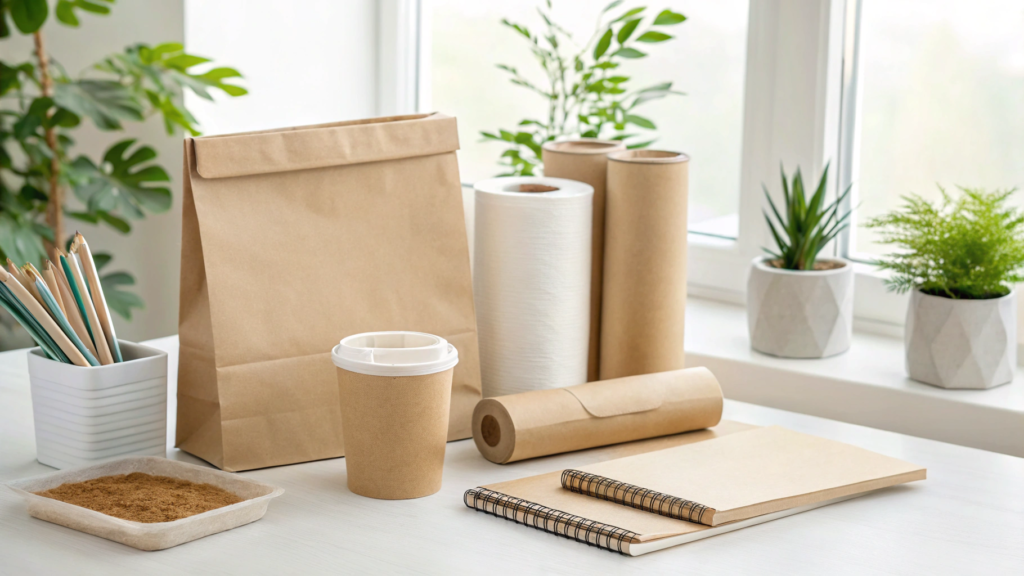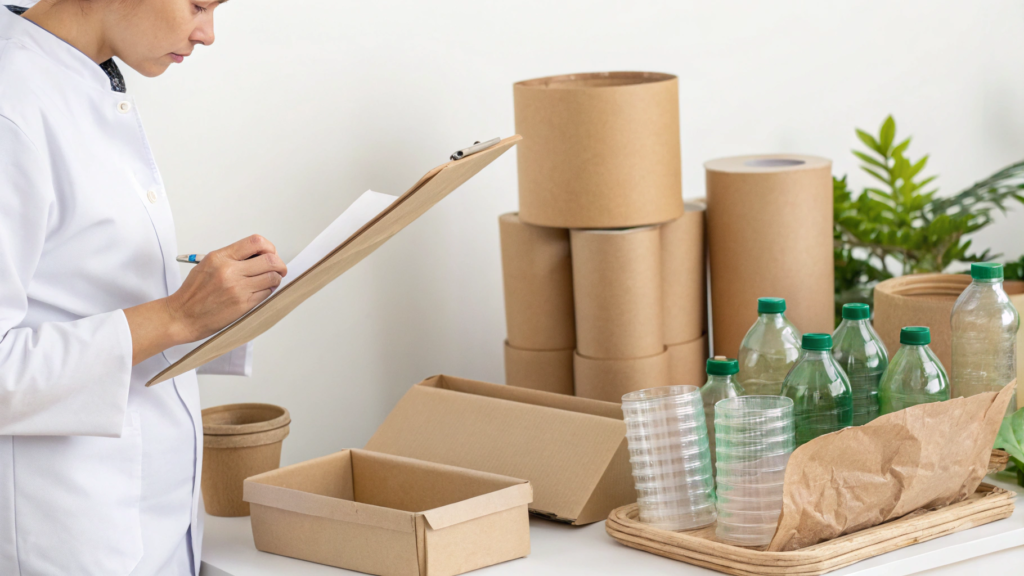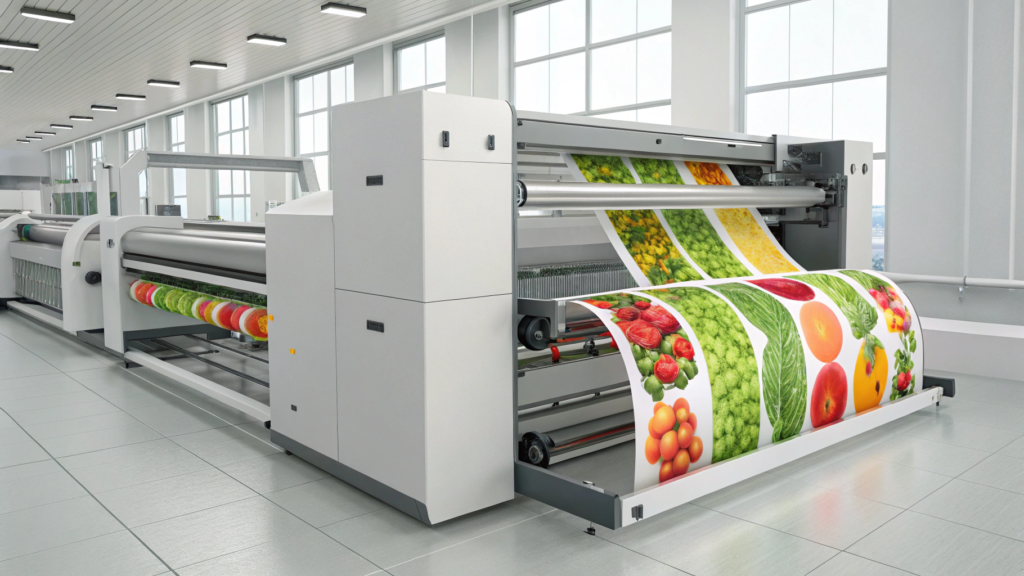
Starting with the need for sustainability, small businesses face a challenge: how to meet consumer demands for eco-friendly products without sacrificing cost-effectiveness. Let's explore how to achieve this balance.
Small businesses can successfully balance sustainability and cost by adopting eco-friendly packaging solutions1. By focusing on reducing waste, using recyclable materials, and leveraging technologies like digital printing2, businesses can meet consumer demands and improve their brand image..
In today's world, more consumers care about sustainability. By adapting to these preferences, businesses can differentiate themselves and build stronger customer loyalty. Let’s dive deeper into how small businesses can achieve this while staying profitable.
How A Business Can Be An Eco-friendly and Sustainable Environment?
How can a business operate in a way that supports sustainability and reduces its environmental footprint? It all begins with making conscious choices.
Being eco-friendly means adopting practices that reduce harm to the environment. Businesses can achieve this by utilizing sustainable materials, reducing waste, and adopting energy-efficient methods in production.

Sustainable Practices for Businesses
One of the first steps a business can take toward sustainability is to focus on reducing waste. This can be done through better production processes, reducing excess packaging, and recycling materials. Here are some ways to become more eco-friendly:
One of the first steps a business can take toward sustainability is to focus on reducing waste. This can be done through better production processes, reducing excess packaging, and recycling materials. Here are some ways to become more eco-friendly:
-
Material Choices3: Opt for renewable or recycled materials in your products and packaging. For example, using biodegradable plastics or recycled paper instead of virgin plastic can significantly reduce environmental impact.
-
Energy Efficiency4: Implement energy-saving techniques in manufacturing, such as using solar panels or energy-efficient equipment. This reduces energy consumption and lowers your carbon footprint.
-
Waste Reduction5: Incorporate a system to minimize waste, such as reusing materials or recycling by-products. This can reduce disposal costs and help create a circular business model.
Creating a Green Brand Image
It’s important to communicate your sustainability efforts clearly. Customers, especially millennials and Gen Z, are more likely to support businesses that align with their environmental values. Highlighting your green initiatives on your website, in your marketing, and through your packaging can increase customer loyalty and attract new buyers.
How Can Businesses Benefit from Adopting Environmentally Sustainable Business Practices?
Adopting sustainable practices goes beyond doing good for the environment. It offers several key business benefits.
Sustainable business practices improve operational efficiency, attract environmentally-conscious consumers, and often lead to cost savings in the long term. By investing in eco-friendly practices, businesses can strengthen their market position and enhance profitability.

Financial Benefits
Though switching to eco-friendly methods may require an initial investment, the long-term financial benefits are significant. Businesses can save money in several ways:
-
Lower Operational Costs: Energy-efficient machinery6, recycling programs, and reduced waste can cut costs over time. For example, reducing packaging waste can save money on raw materials.
-
Government Incentives7: Many governments offer tax credits and subsidies for businesses that adopt green practices. This can offset the cost of switching to sustainable materials or energy-efficient equipment.
Market Appeal
As consumers become more aware of environmental issues, they are increasingly choosing products from companies that prioritize sustainability. A commitment to eco-friendly practices can help a business stand out in a crowded market and attract a growing base of conscious consumers. This is especially true for younger generations who prioritize environmental responsibility when making purchasing decisions.
Regulatory Compliance
Sustainability is also becoming a key regulatory issue. Many regions are implementing stricter environmental regulations. By adopting eco-friendly practices early, businesses can stay ahead of regulations and avoid potential penalties or reputational damage.
How Can Eco-Friendly Packaging Boost Small Business Competitiveness?
Packaging plays a crucial role in product appeal and overall brand image. By adopting eco-friendly packaging, small businesses can improve their market competitiveness.
Eco-friendly packaging is not just about reducing environmental impact. It can also boost your competitiveness by enhancing brand appeal and meeting consumer expectations for sustainable products.

Advantages of Eco-Friendly Packaging
For small businesses, eco-friendly packaging is a smart investment. Here are some benefits:
-
Brand Differentiation: Offering eco-friendly packaging helps businesses stand out. Consumers are drawn to brands that show they care about the environment. This can help build brand loyalty and attract new customers who prioritize sustainability.
-
Cost Savings: In the long run, eco-friendly packaging can save businesses money. By switching to more sustainable materials, businesses can reduce the costs associated with waste disposal, raw materials, and transportation.
-
Improved Customer Loyalty8: Customers who care about the environment are more likely to return to businesses that align with their values. By using eco-friendly packaging, you are building a long-term relationship with these loyal customers.
Examples of Eco-Friendly Packaging Materials
- Recycled Paper and Cardboard: These are widely available and cost-effective. They can be used for boxes, wraps, and other packaging.
- Biodegradable Plastics: Made from renewable resources like corn starch, these materials break down more quickly than traditional plastics.
- Glass and Aluminum: These materials are recyclable and can be reused, making them ideal for products that require more durable packaging.
How Can a Business Remain Profitable and Sustainable with Digital Printing Technology?
Digital printing is a technology that offers numerous advantages for small businesses looking to maintain both profitability and sustainability.
By using digital printing technology, businesses can reduce waste, lower production costs, and create customized packaging without requiring large order quantities. This not only supports sustainability but also helps small businesses remain competitive in the marketplace.

Benefits of Digital Printing for Small Businesses
Digital printing offers a number of benefits that align with both business profitability and sustainability goals:
-
Reduced Waste: Digital printing eliminates the need for expensive and wasteful setup processes, such as creating printing plates. This means less material waste and more efficient production.
-
Customization: Digital printing allows for on-demand customization. This is especially important for small businesses that want to create unique, branded packaging without large upfront costs. You can print only the quantities you need, minimizing waste.
-
Lower Costs for Small Runs9: Traditional printing methods require large quantities to make production cost-effective. Digital printing allows small businesses to print small runs of packaging at a fraction of the cost, making it easier to offer custom packaging without financial strain.
-
Environmentally Friendly Ink: Digital printing uses water-based and eco-friendly inks, which are better for the environment compared to the solvent-based inks used in traditional printing.
Table: Advantages of Digital Printing for Sustainability
| Benefit | Description |
|---|---|
| Reduced Waste | No plates or excessive setup, minimizing material waste. |
| Lower Costs for Small Runs | Print only the quantities needed, avoiding excess. |
| Environmentally Friendly Inks | Use of water-based inks instead of harmful solvents. |
| Faster Turnaround Time | Quick production means faster product launches. |
Conclusion
By adopting eco-friendly packaging and digital printing, small businesses can meet sustainability goals, reduce costs, and increase competitiveness in the market. The benefits of going green extend far beyond environmental responsibility—they can enhance brand loyalty and long-term profitability.
-
To learn about various sustainable packaging options that businesses can adopt. ↩
-
To understand the basics of digital printing and its benefits for businesses. ↩
-
To discover materials that can help businesses reduce environmental impact. ↩
-
To explore strategies for reducing energy use in business operations. ↩
-
To learn effective waste reduction practices that benefit both business and environment. ↩
-
To see real-world examples of equipment that can help businesses reduce energy consumption. ↩
-
To learn about financial benefits and incentives for adopting sustainable practices. ↩
-
To understand how sustainable packaging can strengthen customer relationships. ↩
-
To find out how digital printing can benefit small businesses with custom packaging needs. ↩

